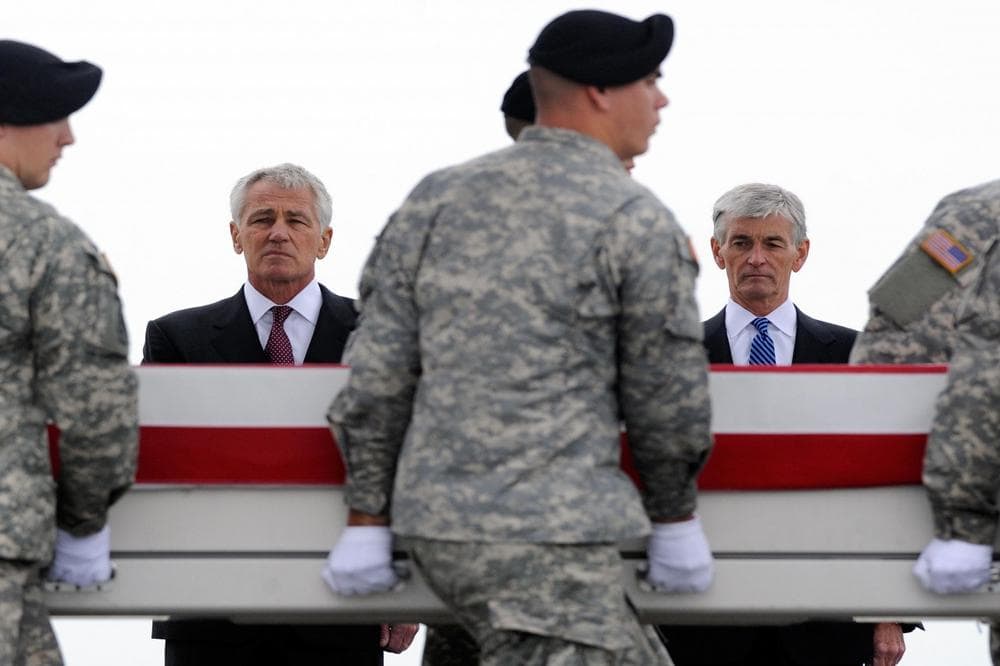Advertisement
The Future Of America's Military
ResumeOn Veterans Day, after more than a decade of deployment in Iraq and Afghanistan, we take the pulse of America’s military – as it faces big cuts and big changes.

Deployment after deployment, in Iraq and Afghanistan. Frequent rotations and a big toll on servicemen and women – and their families. Drone warfare changing the battlefield from above. Women joining the front lines. Reports of sexual assault, spiking. Soldiers surviving wounds that would have killed them even a decade ago. And more massive budget cuts and a pivot to Asia looming in the future. This hour, On Point: this Veterans Day, we’re taking the pulse of America’s military, how it’s changed, where it’s headed.
Guests
Tom Bowman, Pentagon reporter for NPR News. (@TBowmanNPR)
Cpt. Rosemary Mariner, scholar in residence at the Center for War and Society and lecturer in history at the University of Tennessee, Knoxville.
Cindy Williams, principal research scientist at the Security Studies program at the Massachusetts Institute of Technology. Co-author of "Buying National Security: How America Plans and Pays For Its Global Role and Safety at Home."
From The Reading List
Foreign Affairs: Accepting Austerity: The Smart Way To Cut Defense — "It didn’t have to be this way. President Barack Obama signed the BCA in August 2011. By the end of the year, the super committee established to craft a fiscal bargain that would replace the nine-year automatic budget cuts embedded in the bill had crashed and burned, triggering the nine-year budget cuts that began with the March 2013 sequestration. So the White House and the Department of Defense have had two years to develop a national security strategy consistent with the new budget limits, design forces and programs to match that strategy, point the Pentagon down a somewhat less abrupt budgetary glide path, and institute measures to smooth the downsizing."
New York Times: Cuts Have Hagel Weighing Realigned Military Budget — "In recent weeks, Mr. Hagel has filled his calendar with an accelerated series of meetings with the service secretaries and Joint Chiefs, and with the global combatant commanders. He is requiring them to explain — and defend — how they contribute to security against current global threats, with the Army viewed as most at risk of even steeper cuts."
NPR: What's Changed In The Military, And What's Next — "After the war in Vietnam, the U.S. military changed in profound ways. A conscript force became all volunteer. Congress changed the rules to force much more extensive use of the National Guard in any future conflict. Training and equipment emphasized fighting at night. And technology made blunt instruments like aerial bombing far more precise. Scarred by the experience of a war lost in the jungles of Indochina, U.S. military focused on conventional combat. Then, many of the lessons of counterinsurgency had to be re-learned these past 11 years in Afghanistan and Iraq. "
This program aired on November 11, 2013.